In my earlier blog on managing the gap in IT spending and revenue growth, I discussed capacity planning as a process that aims primarily to feed the budget process in your organization, and I emphasized the importance of planning for an efficient system. I also acknowledged the difficulty of forecasting the future. This point is emphasized in some recent news. Glacier National park is removing signs posted throughout the park because the predicted timing of the disappearance of many glaciers turned out to be incorrect.1
Previously, (again in my first blog referenced above) I introduced one specific opportunity to draw out RNI improvements. There I demonstrated how this example helps close the gap between revenue growth and higher MSU demand growth and demonstrated the value in planning for an efficient system. In this blog I will unpack a few more.
Reducing Demand for IT Savings and Investment
You have a unique opportunity as a mainframe performance and capacity planning analyst to evaluate the performance of your systems and the major consumers of its resources. This gives you an opportunity to enumerate recommendations for IT savings and investment. Thankfully, a few authors acknowledge this important aspect of capacity management. 2
When you deliver that 18 month or longer projection for the next budget cycle, try to include some things that bend the projection downward. The forecast might still be wrong, but you will demonstrate your value to the organization with efficiency saving ideas. These will energize you and your team to consider other options for reducing demand so that the company can invest in higher growth areas.
What are some other avenues to reduce demand?
Lower Latency
As with many things, speed is important and lower latency per unit means more throughput, better customer satisfaction, and more ‘think time’ to sell into. Look into CICS transaction waits, DB2 waits, Coupling Facility delays, and Disk Delays.
Below are some specific examples:
Evaluate Your Database for Indexes
In extreme cases, improvements close to an order of magnitude might be present in your DB2 CPU / transaction performance. Remember the last time a critical index was dropped? Act on that answer and proactively provide your database experts some reports to encourage them to review the indexes that may provide improvements.
Use your resources to look for the most expensive SQL statements (top 5). Is the expensive SQL causing a huge number of getpages unnecessarily? While you may need more than the following chart of getpage activity to aid your analysis, you may find clues to help you seize opportunities and enjoy showing your colleagues and leaders the improvements you can quantify!
The IntelliMagic Vision reports below show the getpages dropping while the overall business goes up! Telling your boss they are getting more for less with reports like these are always a win-win-win!
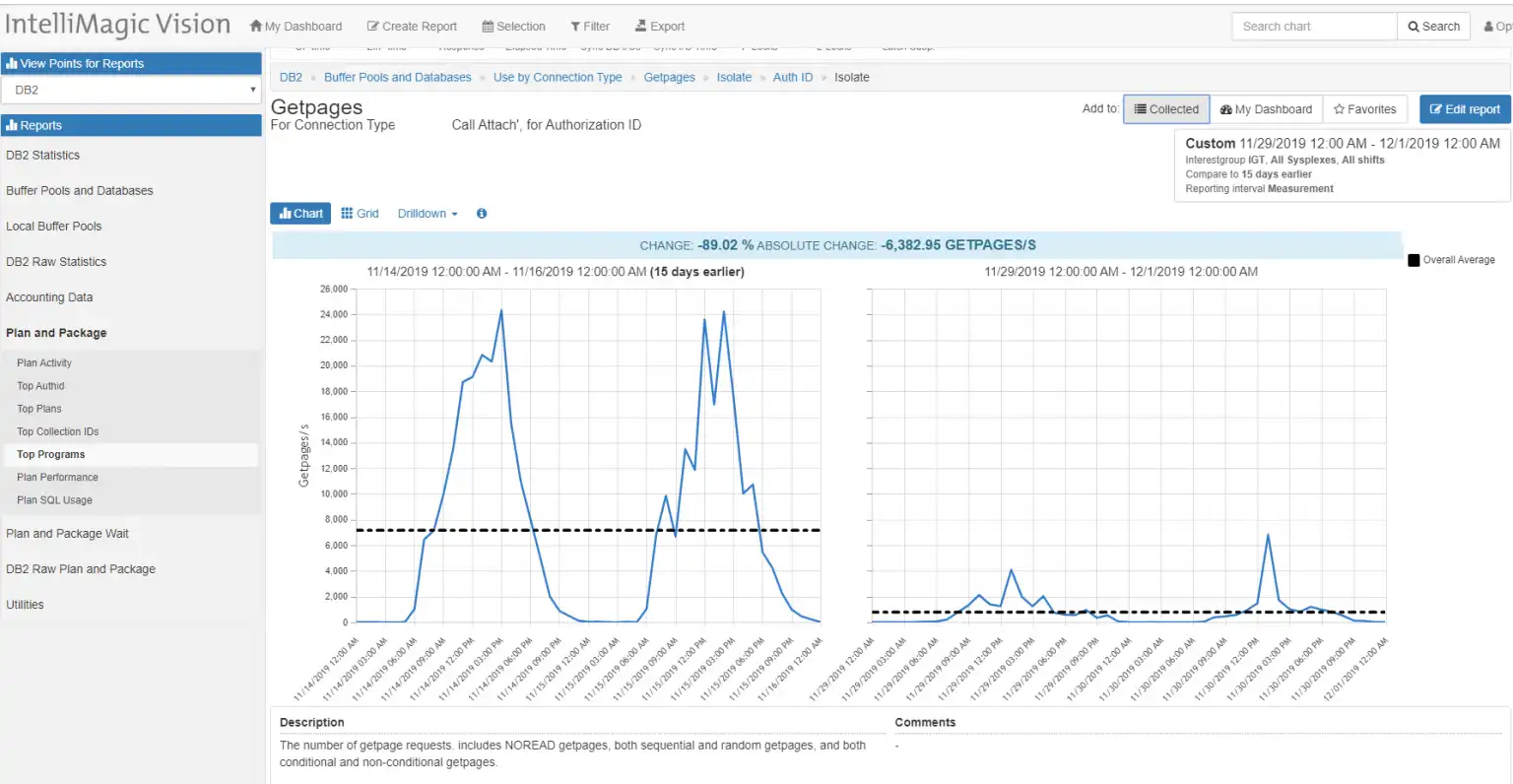
Before and After Index Compare of Plan Getpages for a Specific AuthID
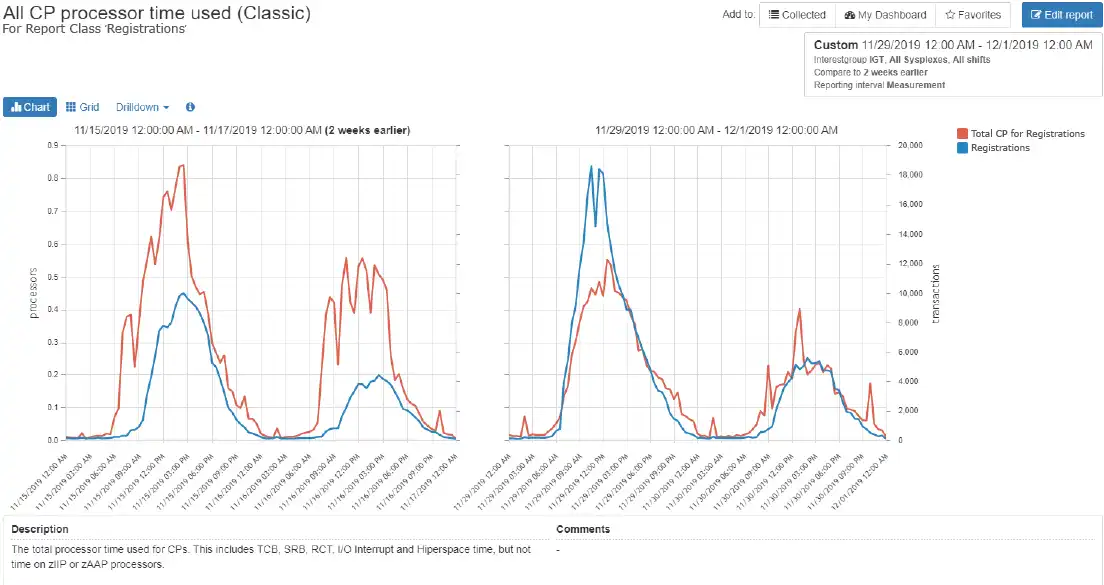
Before and After Index Registration Transaction CPU and Registration Rate (transactions)
Explore New Technology Offerings
Exploit compression – both outside the system (tape system compression, and network appliances), and at the processor level (zEDC), and now on board with the z15 coprocessors. The investment in newer technology can reduce latency and increase efficiency by reducing general CP demand in your system.
Lower Demand
Subtle usage patterns in your application and or business models may provide avenues to prioritize the work more effectively or just plainly reduce demand.
Identify Opportunities to Segment Lower Importance Work
Work with the business to identify opportunities to segment lower importance business work and employ strategies to limit demand from those workloads vs. more important work.
Use WLM and software capping to limit the impact on your loved ones. These are well known and underutilized methods for reducing and gating more discretionary work.
For example, digital shopping transaction rates/booking rates vary greatly for some online travel sites. Some sites drive over 1,000 shopping transactions/booking, whereas an airline site might drive less than 20 shopping transactions/booking.
If your backend systems segmented the importance of that work rather than treating each shopping call with equal priority, a very likely result would be more profit from less IT infrastructure demand. Making these changes will require a new mindset with some folks in your business, but it has great potential. Furthermore, there are easier paths to take for systems that have true workload management (WLM) capabilities.
Reduce IO
It’s an old idea, but it still holds true. Evaluating the big IO drivers related to your primary CPU consumers and evaluating ways to reduce IO will always improve performance and lower CPU demand per transaction. Use buffer pool residency times and Buffer pool Hit % to help you evaluate buffer pool sizing. There are many drilldowns available within IntelliMagic Vision to help you pursue efficiencies with your database counterparts.
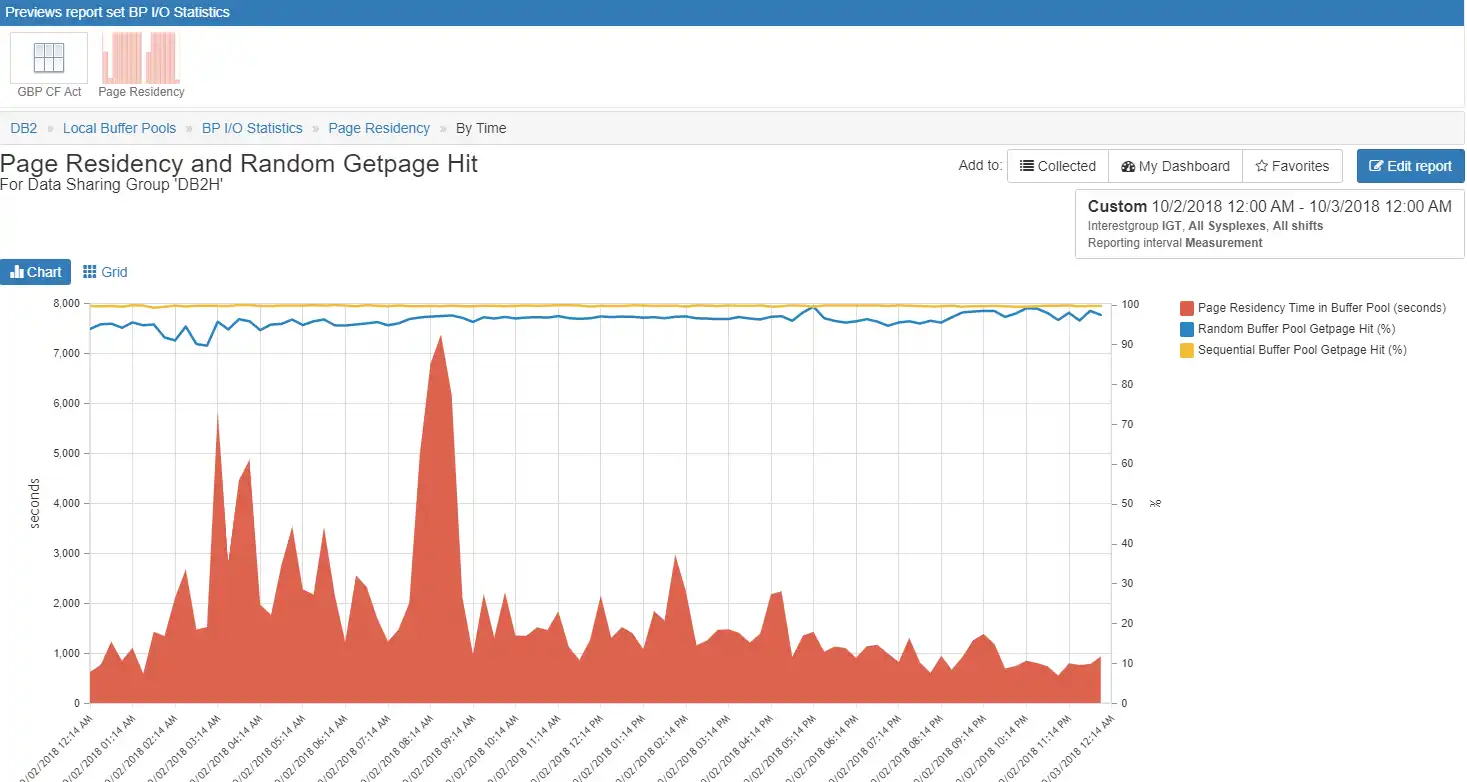
Data Sharing Page Residency and Buffer Pool Hit %
Reduce Contention
Do you have a quick view to evaluate coupling facility false lock contention? The cost of the lock manager arbitration of the contention is a 100:1 as compared to a regular coupling facility lock request. Sometimes, additional coupling facility memory for a structure will reduce the false lock contention by increasing the number of lock entries, such that more unique hash values are used.
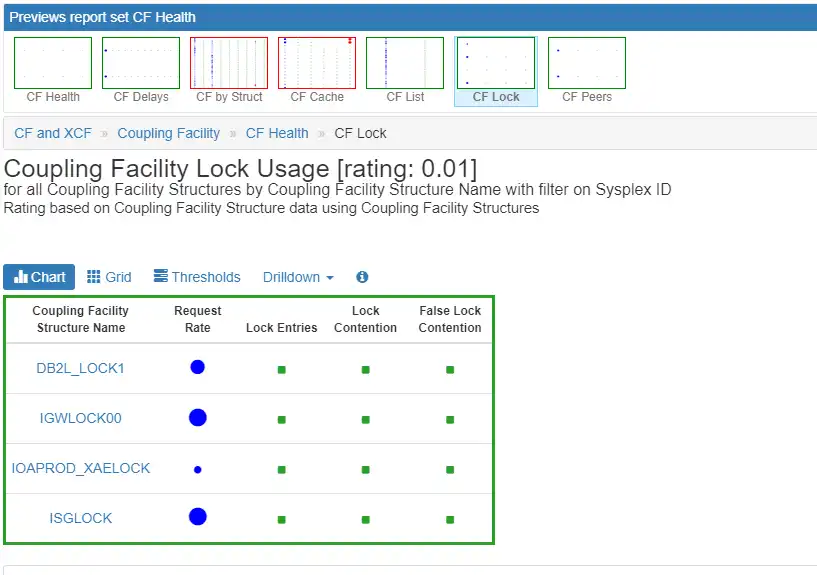
Coupling Facility Lock Usage
Know Your Top Workloads.
For example, a quick modification of one of the IntelliMagic Vision out-of-the-box reports provides a top 5 list of CP usage for a given day.
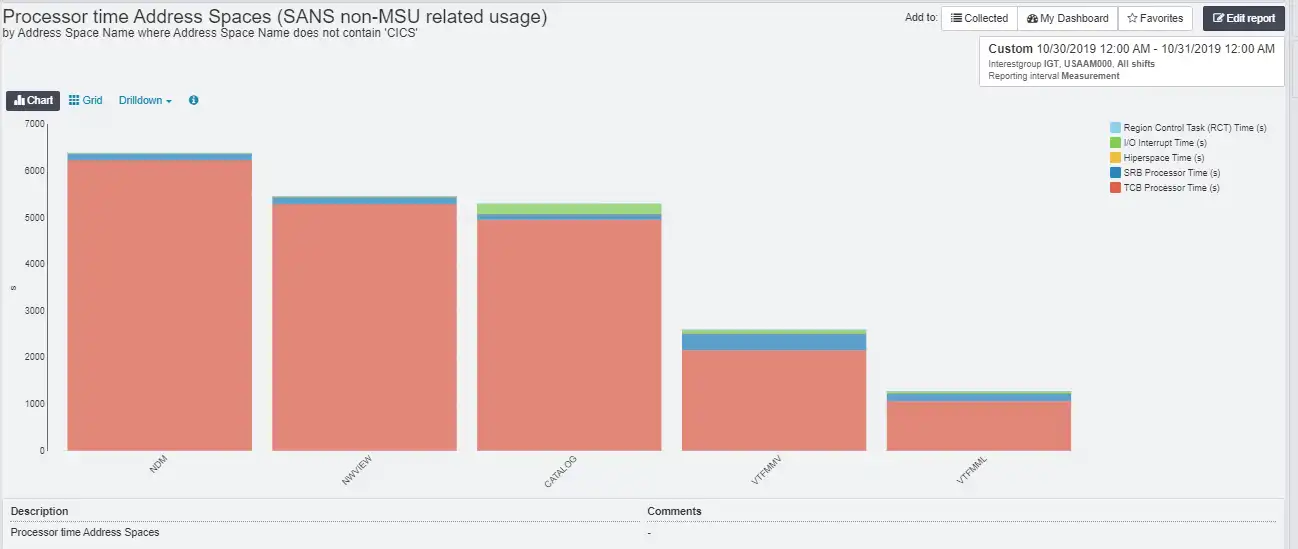
Qualified Top 5 List of CP Usage for a Given Day
You may already know what those are, but do you know what’s driving them to grow? Perhaps a new one has made it into the top 5 and you have other concerns. The time of day, and other details are easily accessed with some drilldowns and report editing features will help you take action.
Recognize that when evaluating the new software pricing models for z/OS, every CPU cycle matters with Tailored Fit Pricing. Finding savings in those big buckets first is a good place to begin.
Review Abended Jobs
What about the accumulated CPU consumed by jobs that abend, resulting in wasted CPU time and re-runs?
Here’s a quick view (out of the box) of resource consumption for abended jobs.
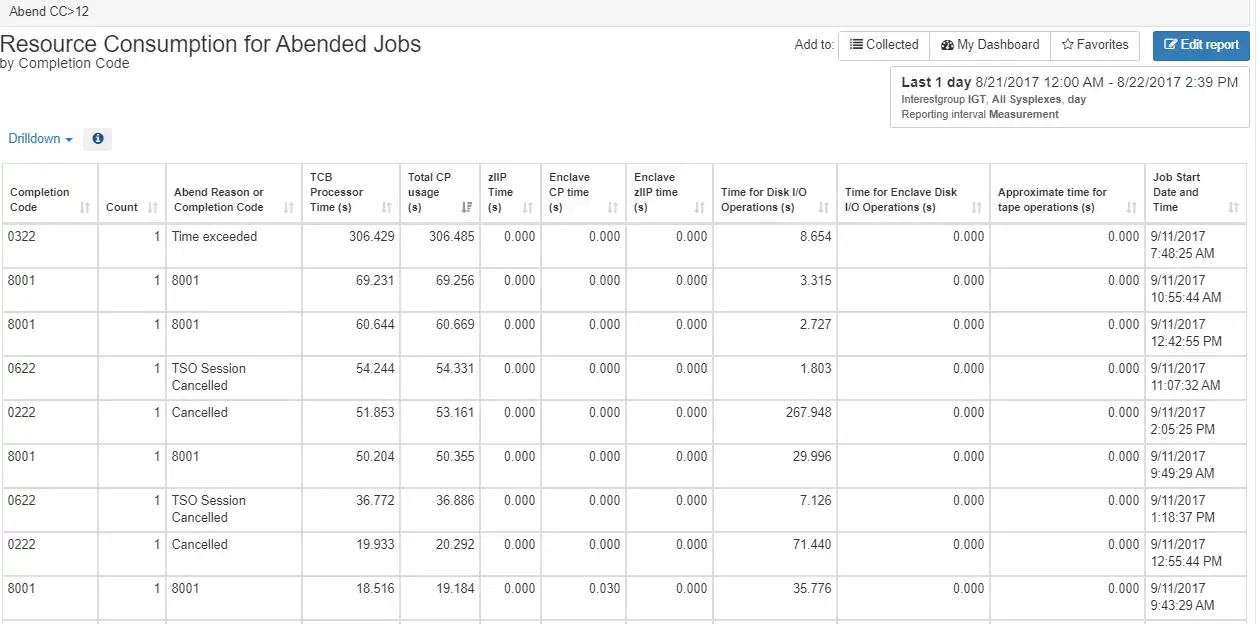
Resource Consumption for Abended Jobs
Reviewing this type of information and details from available drilldowns can help you act on preventable re-work and will help drive out unnecessary re-runs and reduce overall demand.
Conclusion: Bending the IT Demand Curve Down
Mainframe capacity planning is an important budgetary input. If you ensure your performance is in order or have mentioned some efficiency recommendations, you will help keep your organization lean and productive.
Look for opportunities to improve performance (efficiency) as you produce the artifacts necessary for the budget process.
We discussed several ways to reduce latency and lower demand in this brief overview. There are likely other ways that may be specific to your organization. Ask questions of your business, application and partners, like IntelliMagic.
We would welcome an invitation from you and your team to help you demonstrate your value in the organization and bend that IT demand curve down. Contact us here.
References
1 https://www.cnn.com/2020/01/08/us/glaciers-national-park-2020-trnd/index.html
2 A-Z of Capacity Management: Practical Guide for Implementing Enterprise IT Monitoring and Capacity Planning, Dominic Ogbonna, pg. 183, 2017, Booklocker.com
This article's author
Share this blog
You May Also Be Interested In:
What's New with IntelliMagic Vision for z/OS? 2024.2
February 26, 2024 | This month we've introduced changes to the presentation of Db2, CICS, and MQ variables from rates to counts, updates to Key Processor Configuration, and the inclusion of new report sets for CICS Transaction Event Counts.
Top ‘IntelliMagic zAcademy’ Webinars of 2023
View the top rated mainframe performance webinars of 2023 covering insights on the z16, overcoming skills gap challenges, understanding z/OS configuration, and more!
Why Am I Still Seeing zIIP Eligible Work?
zIIP-eligible CPU consumption that overflows onto general purpose CPs (GCPs) – known as “zIIP crossover” - is a key focal point for software cost savings. However, despite your meticulous efforts, it is possible that zIIP crossover work is still consuming GCP cycles unnecessarily.
Book a Demo or Connect With an Expert
Discuss your technical or sales-related questions with our mainframe experts today

 Jack Opgenorth
Jack Opgenorth